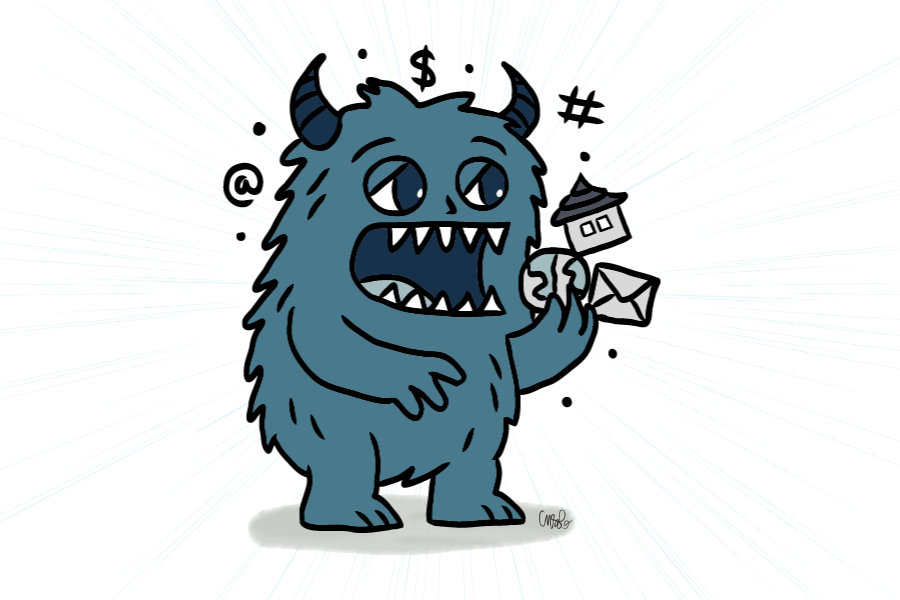Now is the Time to Reframe Your Competitive Strategy
Direct competition is no longer the primary factor a business should consider critical to remaining relevant. A brand’s business strategy must continuously evolve to compete, many times across industries, based on customer experience.
What is Competitive Strategy?
Michael Porter, who is a leading authority on business strategy at Harvard Business School, defines competitive strategy as “the means by which an organization gains a competitive advantage over its rivals.”
He argues that in order to gain and sustain a competitive advantage, or "the ability of a firm to outperform its rivals in the marketplace,” a firm must choose one of three approaches: cost leadership, differentiation, or focus.
He further states that a firm must have the right mix of activities, resources, and capabilities to execute the chosen strategy effectively. Porter’s influence on business strategy has been profound, and his work is still widely studied and applied today.
The Changing Nature of Competitive Strategy
In recent years, the nature of direct competition has shifted dramatically. Companies are increasingly competing on innovation, customer experience, and relationships rather than on price, quality, or product features.
This shift has been driven by changing consumer expectations, technological advances, and the emergence of new business models. As a result, companies are relying more on non-traditional methods of competition, such as leveraging technology to gain insights into customer behavior and crafting unique customer experiences.
The Customer Experience
The term customer experience is a holistic concept that encompasses all aspects of a customer's interactions with a company, service, or product, as well as the resulting perception of the brand.
It encompasses not only the tangible elements, such as the quality of the product or the efficiency of customer service, but also the intangible elements, such as the emotional connection a customer feels with a brand or the overall level of trust and confidence a customer has in a company.
The customer experience can significantly impact a customer's loyalty and willingness to recommend a brand to others.
In the past, companies relied on traditional marketing and advertising tactics to attract customers. However, today, customers are more likely to search for and interact with companies through digital channels to build relationships through personalized experiences and to create innovative products and services that solve customer problems.
Technological advances have enabled companies to use data to gain insights into customer behavior and preferences, creating more personalized and targeted experiences that differentiate them from competitors and create a competitive advantage.
The emergence of the platform economy, or a digital space for a direct-to-consumer transaction-based system (i.e., subscription services, digital marketplaces, etc.), creates new opportunities for companies to reach and engage with their customers directly.
In this new, dynamic, competitive environment, where the customer experience is paramount, companies must be agile and adaptive to succeed in conditions where the only constant is change.
Competing Across Industries
In this increasingly complex, competitive landscape, businesses must evaluate trends across and strategies employed by other industries to attract new customers and remain top-of-mind with their existing customer base.
According to Harvard Business Review,
“The ultimate test of your strategy is not how well you stack up against what your rivals are already doing, but whether or not you live up to what your customers believe you can and should be doing… So when it comes to strategy, one way to meet radically new expectations in your industry is to draw from the impressive and surprising strategies that are being used in other industries.”
A platform economy is an economic system in which companies use digital platforms to facilitate transactions and create value.
Examples of a platform economy include online marketplaces, ride-hailing services, and subscription services. These platforms enable companies to reach and engage with customers more efficiently and cost-effectively than traditional, linear business models.
Forbes writes, “In a linear business model, a company creates a product and sells it to a distributor, which then sells it to the customer. Value is often created by making the supply chain more efficient.”
Platforms have created a new, dynamic competitive landscape in which companies must be agile and adaptive to succeed.
Lexus, a premium car brand, applied the luxury lifestyle concept from the hospitality industry - specifically, the Four Seasons - to its brand. The brand offers its customers a range of exclusive experiences, such as a concierge service and access to exclusive events.
Lexus also implemented Answer Bars, directly modeled after Apple’s Genius Bars, in its dealerships “to teach customers about the sophisticated technology in the vehicles, troubleshoot problems, and get them more excited about their cars.”
Another cross-industry example of business strategy implementation is Nike, an athletic lifestyle brand, which applied the automotive industry's concepts of personalization and customization to its products, enabling customers to customize their shoes to match their individual styles.
Forbes states, “Nike credits its Nike Customer Experience (NCX) platform as driving virtually 100% of growth in 2018, according to a new study of Nike’s distribution strategy by Euromonitor.” A previous President of Director-to-Consumer at Nike, Christina Shi, stated: “The art and science of choice is to find out what the customer values.”
Other examples of bold adaptations in business strategy include luxury retail brands such as Armani and Tiffany & Co., which have moved into the luxury hospitality sector. The European notes,
“The reason behind this move is because there is an increasing demand from luxury consumers – in particular from younger generations – to live and experience their beloved brands, going beyond the concept of simply owning a luxury item.
Moving into the hospitality industry allows luxury brands to enhance this luxury experience for their customers and attract the future luxury clients. In doing this, they are transforming their marketing tactics from ‘story telling’ to ‘story living’, as they have realised the potential in integrating hospitality into their core business model for a more holistic and multi-sensorial experience.”
Studying brands and their business strategies in other sectors provides businesses with opportunities to innovate by applying concepts common to those industries to their own. A brand’s ‘direct competition’ is no longer other businesses competing for relevancy in the same sales channel and market sector. Competition for the same customers’ attention - and loyalty - is coming from everywhere all at once.






Big tech may be sinking deeper into internet ‘enshittification,’ but not every platform is following that path. Patreon CEO Jack Conte argues that the internet can still be a place where creativity, community, and genuine human connection come first. By designing algorithms that fund art - not ads - and keeping humans, not engagement traps, in control, platforms can provide a healthier digital ecosystem.